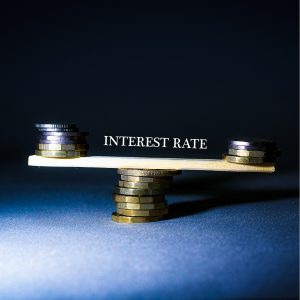The interest rate of your fixed rate mortgage is directly tied to the cost of the money that the bank loans to you. Banks have many different ways to borrow money which they then loan to consumers, the most basic way they do this is accepting your deposits and paying you interest on your deposit – they have effectively borrowed money from you. Consumer deposits are the banks cheapest source of funds.

Another important source of funds is the bond market. A bank issues bonds – borrowing money from investors – and then lends the money to its clients and profiting by the difference in what it pays in interest to its investors and receives in interest from its borrowers.
The cost to the bank of this source of funds is tied to the price of Government of Canada (GoC) bonds. GoC bonds are considered risk free and bank bonds are generally priced with a risk premium over and above the price of GoC bonds.
So by predicting the movement in the price of GoC bonds we can predict the movement in fixed interest rates to consumers. The usual ebb and flow of the economy and allocation of investments across risk tends to move the bond markets. When investors are feeling risk adverse bond yields go down as they buy bonds in favour of other assets – when investors are feeling more optimistic and therefore less risk adverse bond yields go up as investors sell bonds to invest money elsewhere.
And then comes a pandemic and this thing called Quantitative Easing (QE) which is a Bank of Canada (BoC) tool to help it with some of its core functions namely stability in the financial markets and a predictable and stable inflation rate. The BoC’s current QE of close to $4 billion a week in intervention in the medium term bond markets is a significant contributor to keeping fixed rates low and the expectation that this QE program will continue means we will continue to see low fixed rates until the economy shakes off the pandemic.
At first, the QE program was about liquidity and stabilization of the market. That focus has shifted and is now about the BoC maintaining its inflation mandate. By keeping rates low and encouraging consumer and business borrowing to provide capital into the economy in the form of spending and investment in goods and services. With a weak pandemic ravaged economy – cheap money is needed in the economy and the QE program keeps interest rates low which encourages borrowing and spending and investment.
As the economy improves and employment begins to return to normal or the new normal as it is clear this pandemic period will have lasting effects on how we work, that QE program will begin to taper off. It is not expected to happen very soon. So even as the economy improves with the widespread introduction of the Covid19 vaccines the BoC will most likely keep its QE program in place to insure that any recovery does not stall. Subsequently, today’s low rates are not disappearing very soon.
